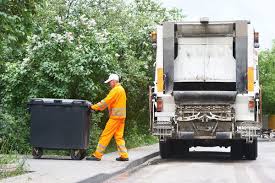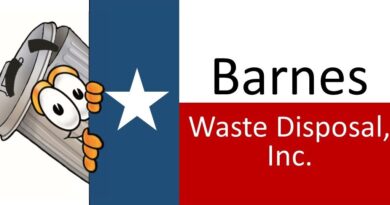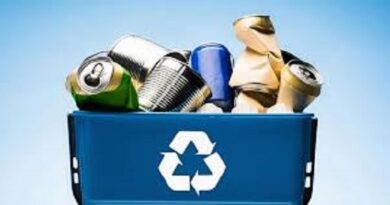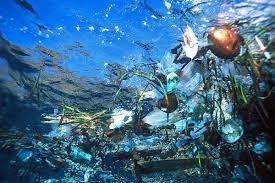Proper Methods of Waste Disposal
There are various methods for the waste disposal employed throughout the world. The approach may vary from developed to developing countries or from rural to urban areas. Some of the widely used waste disposal methods are Integrated Waste Management and Landfill.
1. Integrated Waste Management
This waste disposal method uses LCA life cycle analysis attempts for providing the most caring options for waste management. In case of a mixed municipal solid waste, the waste minimization includes the separation and collection of waste followed by reuse and recycling of the non-organic fraction.
It also includes the production of energy and compost/fertilizer from the organic waste fraction through the anaerobic digestion.
2. Landfill
Landfill is the widely used method of waste disposal that involves burying the waste in land. Landfills were established usually in deserted or vacant quarries by mining voids or borrowing pits. It proves to be relatively cheap method of disposing of waste materials if it is properly designed and well-managed.
The poorly designed or managed landfills can leads to adverse environmental impacts like wind-blown litter, generation of liquid leachate and attraction of vermin. The other common by product of landfills includes gas that is composed of methane and carbon dioxide. It is produced as organic waste that breaks down anaerobically, kills surface vegetation, and creates odour problems.

When all the trucks arrive to the landfills, they first get separated into their proper place; disposing of waste in a landfill involves burying the waste, and this remains a common practice in most countries. Landfills were often established in abandoned or unused quarries, mining and voids or borrow pits.
Read Also: Definition and Concept of Pollution Abatement and Control
A properly designed and well-managed landfill can be a hygienic and relatively inexpensive method of disposing of waste materials. Older, poorly designed or poorly managed landfills can create a number of adverse environmental impacts such as wind-blown litter, attraction of vermin, and generation of liquid leachate.
Another common product of landfills is gas (mostly composed of methane and carbon dioxide), which is produced as organic waste breaks down anaerobically. This gas can create odor problems, kill surface vegetation, and is a greenhouse gas.
Design characteristics of a modern landfill include methods to contain leachate such as clay or plastic lining material. Deposited waste is normally compacted to increase its density and stability, and covered to prevent attracting vermin (such as mice or rats).
Many landfills also have landfill gas extraction systems installed to extract the landfill gas. Gas is pumped out of the landfill using perforated pipes and flared off or burnt in a gas engine to generate electricity.
Use of Industrial Recycling and Waste Management Machines
Industrial waste management generally refers to a set of strategies and approaches that aim to eliminate, reduce, reprocess or dispose of waste produced in an industrial setting. Industrial waste can be toxic, chemical, solid, liquid, or nonhazardous.
Typically, however, industrial waste management is concerned with the proper disposal of industrial by products that could be harmful to the environment. Some of the common approaches to industrial waste management include emphasis on recycling programs, incineration, and landfills.
In industrial production, many materials are employed to manufacture products and because of the scale of that production, a lot of waste is generally produced. As a result of the size of the problem, industrial companies employ waste managers to focus solely on the issue of proper and effective disposal of waste.
Most of that focus is in complying with eco-friendly laws which are becoming more common by various governmental bodies. Some of these laws propose penalties in the forms of fines or increased taxes.
There are many different approaches to industrial waste management. Waste may be collected and transported for disposal at another location, or it might be disposed of on site. Recycling or reusing is another solution that industrial companies are implementing. All these solutions can help reduce the amount of industrial waste a company disposes of.
The type of industrial waste produced is an important factor in determining the most effective disposal method. Two of the most common methods of waste disposal are the use of landfills and incineration devices. Depending on the type of waste, it can be disposed of or buried underground at a landfill site.
This approach, however, is limited, as there are certain materials which are not dangerous to the environment. Chemical waste or other types of toxic waste are not to be dumped at landfills because it can seep into the groundwater and present a health concern to nearby populations. Incinerators are also used to burn waste materials in appropriate cases.
Environmental groups, however, typically do not favor this approach because of the related emission of hazardous gases.
In general, recycling, when possible, is a favored solution of industrial waste managers and environmentalists. Recycling has two general advantages: it is environmentally-friendly because it converts used products into usable materials, and it can be a source of revenue or reduce costs.
A company can convert previously useless waste into a material that they may re-use in their own manufacturing process obviating the need to purchase that material anew, or the company can sell the material for a profit. Some of the most common recycling strategies employed in industrial waste management include biological and physical reprocessing, and energy recovery.
1. Plasma Gasification

Plasma is a primarily an electrically charged or highly ionized gas. Lighting is an example of plasma which produces temperatures exceeding 12,600 °F (6,980 °C). In this method of waste disposal, a gasifier vessel uses characteristic plasma torches that operates at +10,000 °F (5,540 °C which is equals to the surface temperature of the Sun) for creating a gasification zone till 3,000 °F (1,650 °C) for the conversion of solid or liquid wastes into a syngas.
During the treatment of municipal solid waste by this method, the waste‘s molecular bonds break down due to intense heat in the vessels into elemental components. The process leads to the elemental destruction of waste and dangerous materials. The Plasma gasification provides new opportunities to the countries for the waste disposal, and additionally, it also allows the renewable power generation in an environmentally friendly manner.
With growing environmental awareness and moreover the subsequent demand for innovative methods of minimize carbon footprints, a number of systems like smart recycling equipment’s are being developed.
Because of the availability of advanced recycling machines like shredders, conveyors, balers, plus compactors, you can substantially reduce the amount of matter you discharge as industrial by products or domestic waste materials.
2. Shredders
Cross-flow Shredder – The cross-flow shredder uses the technique of beating waste down so that it smashes into smaller fragments, or shreds. Single-shaft Shredder – Essentially, it is the most conventional among best shredder types, the single-shaft shredder utilizes traditional blades to rip the waste particles aside.
Read Also: Institutional Arrangement for Pollution Control
Multi-shaft Shredder – An advanced version of the single-shaft shredder, it accomplishes its process by forcing waste against blades or between them.



